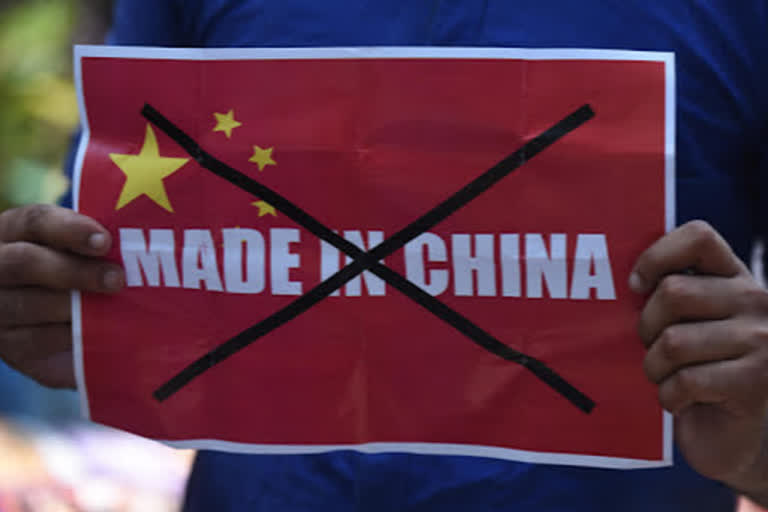New Delhi: Reacting to a research by LocalCircles which highlighted a rise in the number of Indians stepping away from buying China-made products, economist NR Bhanumurthy said it is long way for the country to catch up with the Chinese and the Korean markets. The recent drop in demand comes after a violent clash erupted between the Chinese and Indian soldiers last year. After the attack on Indian soldiers in Galwan valley, many Indians had expressed their intent to boycott Chinese-made products.
Moreover, the economic pundit also proffered credit to the idea of 'Aatma Nirbhar Bharat' or Self Reliant India initiated by Prime Minister Narendra Modi in order to revive the economy after the COVID19 lockdown. The core idea was primarily aimed at promoting domestic production of products to cut economic dependency on China. Later in the year 2020, following the escalation with China and to counter China’s hegemonic strategy and the growing aggressiveness, the government had blocked 59 Chinese apps in June and 118 more apps, including PUBG mobile game, in September.
Read: Demand for 'made in India' toys increase in Gujarat's Rajkot amid Chinese products boycott
“There is a need to bring the RCEP into the discussion which was led by China and India is not a signatory to it. In any case, India is part of the global value chain and we should continue to be a part of it but at the same time, many things need to be done so that India can become very competitive in the international market,” he told ETV Bharat.
“Although, I don’t have any doubt that India can be a competitive country compared to China and others, right measures are still needed. For instance, India is quite competitive in the service sector compared to the Chinese but when it comes to manufacturing, especially, where labour employment becomes major components, we are not anywhere near to competing with the Chinese. The Government was trying to initiate the labour market reforms sometimes back and there are also measures in terms of land. I think, there is some policy intervention that is coming up which would help improve the competitiveness of the Indian manufacturing sector,” he added.
He also said that India should avoid taking missteps like introducing the import tariffs, which has been happening for the past 1 year where India is increasingly bringing many commodities under the import tariff net. ‘These are some of the factors that certainly, will not be helpful in the long run, he pointed out.
What does the survey say?
Though 57 per cent of people—which is a major chunk—preferred to buy the Chinese items but it is also important to note that of those Indian consumers who purchased the products, 60% bought only 1-2 items. The majority of Indian consumers who purchased made in China products did so because they are the cheapest available option and offer value for money. However, 40% of them also highlighted uniqueness and 38% highlighted quality as a differentiator, the Localcircles survey said.
Therefore, these are some of the key factors that the MSME’s and Indian manufacturers must consider improving to give a tough fight against the Chinese counterpart.
Though Chinese trade with India declined in the calendar year 2020 by 5.6% to USD 87.6 billion, the 5 months of the calendar year 2021 show a 42% increase in Chinese imports by value. LocalCircles research suggests that this surge was particularly due to the rise in import of life-saving medical equipment and medical oxygen equipment by India from China as COVID-19 cases surged in the country.
With most of that year being induced by the pandemic and subsequent lockdowns, household earnings were severely impacted, and for some buying, the lowest cost product was not a choice but the only option and hence they ended up buying Chinese items.
Read: Pune village passes resolution to ban sale, purchase of Chinese products
India’s economic recovery which looked on solid footing in January 2021 with leading global institutions predicting 11% GDP growth for 2021-22 has hit another speed bump with the lethal 2ndCOVID wave putting almost all states in a 45-60 day lockdown, Local circles said. With daily COVID cases now declining by over 80% in the last one month from over 400,000 to near 80,000 and the economic unlocking underway, many Indians are hoping for a fast recovery through the likelihood of a 3rd COVID wave before year-end is high.
To understand, where Indian consumers stand a year later on their resolution to buy no or less Chinese, LocalCircles conducted a survey that received near 18,000 responses from consumers located in 281 districts of India. The survey also tried to understand the primary reason that prompted Indians to buy Chinese products in the last 12 months.
Alternatively, the survey found out from those Indian consumers who purchased made-in-China products in the last 12 months, 60% bought only 1-2 items. 14% said they bought 3-5 products, 7% bought 5-10, 2% said 10-15, and another 2% said more than 20 products.10% couldn’t say. This indicates that of those who did buy Chinese products in the last 12 months, a majority 60% bought 1-2 items only.
The responses on an aggregate basis indicate that 70 per cent of Indian consumers who purchased made in China products in the last 12 months did so because they felt products offered value for money. This question in the survey received 8,754 responses. Alternatively, if we are to separately seek out reasons why Indian consumers bought made-in-China products, 70% voted for “value for money”, 40% said “uniqueness”, and 38% cited “better quality,” the survey report added.
Read: Trade dependency on China: India may not be able to boycott Chinese products



